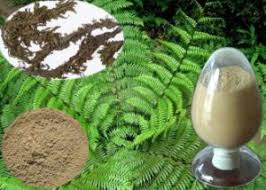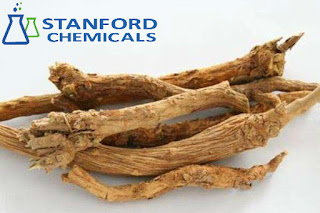What are the Effects of Huperzine A
1 Anti AChE effect and its mechanism: the interaction mechanism and mode of Hup A and AChE are deeply studied by means of the dynamic method, computer-aided molecular docking design, and X-ray crystal diffraction. Hup A can inhibit AChE by binding to AChE. In vitro experiments showed that the binding of Hup A to AChE was reversible, and AChE could be recovered after Hup A was released.
AChE has stereoselectivity for Hup A recognition, Hup A can effectively inhibit AChE, while Hup A has no substantial inhibition effect. The minimum effective dose of Hup A to rat cerebral cortex AChE was 10 nmol / I., and the inhibitory effect was a typical mixed competitive inhibition. The inhibitory effect of Hup A on butyl cholinesterase (BuChE) in rat plasma is weak. Because of the significant difference between the inhibitory intensity of AChE and BuChE in the Hup A, the level of acetylcholine in the brain is significantly increased and the external effect is not obvious, thus reducing the side effects of the peripheral cholinergic activity. Repeated administration of Hup A showed no significant decrease in AChE compared with single dose administration, indicating that the body was not susceptible to Huperzine A.
2 The effect of on neurotransmitters and the effect on cholinergic receptor: Hup A and cholinesterase reversible binding, so that cholinesterase can not hydrolyze acetylcholine, thus the level of acetylcholine increases and produces the effect of cholinergic activity. The levels of norepinephrine and dopamine in the brain of Hup A showed a significant dose-dependent increase after intravenous or local administration. These changes in neurotransmitter levels may contribute to the increased cognitive function of Hup A. Hup A also has a slight direct effect on cholinergic receptors.
3 The effect of on muscle: Hup A has the effect of strengthening muscle contraction. Experiments on Hup A awakening and anti-muscle relaxation are similar results, suggesting that it can be used in the treatment of myasthenia gravis and antagonism of nondepolarizing muscle relaxant.
4 neuroprotective effect: Hup A has extensive neuroprotective effects besides significant cholinesterase inhibition. Its protective effect also plays an important role in the treatment of AD and the damage of neurotoxic substances.
AChE has stereoselectivity for Hup A recognition, Hup A can effectively inhibit AChE, while Hup A has no substantial inhibition effect. The minimum effective dose of Hup A to rat cerebral cortex AChE was 10 nmol / I., and the inhibitory effect was a typical mixed competitive inhibition. The inhibitory effect of Hup A on butyl cholinesterase (BuChE) in rat plasma is weak. Because of the significant difference between the inhibitory intensity of AChE and BuChE in the Hup A, the level of acetylcholine in the brain is significantly increased and the external effect is not obvious, thus reducing the side effects of the peripheral cholinergic activity. Repeated administration of Hup A showed no significant decrease in AChE compared with single dose administration, indicating that the body was not susceptible to Huperzine A.
2 The effect of on neurotransmitters and the effect on cholinergic receptor: Hup A and cholinesterase reversible binding, so that cholinesterase can not hydrolyze acetylcholine, thus the level of acetylcholine increases and produces the effect of cholinergic activity. The levels of norepinephrine and dopamine in the brain of Hup A showed a significant dose-dependent increase after intravenous or local administration. These changes in neurotransmitter levels may contribute to the increased cognitive function of Hup A. Hup A also has a slight direct effect on cholinergic receptors.
3 The effect of on muscle: Hup A has the effect of strengthening muscle contraction. Experiments on Hup A awakening and anti-muscle relaxation are similar results, suggesting that it can be used in the treatment of myasthenia gravis and antagonism of nondepolarizing muscle relaxant.
4 neuroprotective effect: Hup A has extensive neuroprotective effects besides significant cholinesterase inhibition. Its protective effect also plays an important role in the treatment of AD and the damage of neurotoxic substances.
For more information, please visit http://www.stanfordchem.com/hyaluronic-acid.html





Comments
Post a Comment